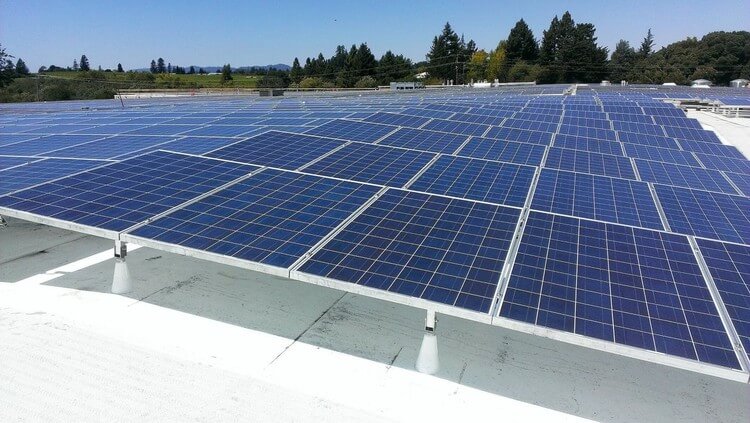The UAE and Saudi Arabia will lead the sector, while Oman will emerge as the fastest-growing market, shares Frost & Sullivan
SANTA CLARA, Calif., July 5, 2021 /PRNewswire/ — Frost & Sullivan’s recent analysis on the distributed energy market in the Gulf Cooperation Council (GCC) finds that it is gathering momentum with declining technology costs, resource availability, and favorable policies. This encourages customers to self-generate electricity through distributed renewable sources and sell excess electricity back to the grid, transforming customers into prosumers (an individual who consumes as well as produces goods or services).
The region’s total distributed energy market, which encompasses distributed solar photovoltaic (PV), distributed wind power, hybrid systems, diesel gensets, and gas gensets, is estimated to garner a revenue of $602 million by the end of 2021 from $480 million in 2020, registering strong double-digit growth at a compound annual growth rate (CAGR) of 25.4%. This will be driven by the recovery in the diesel gensets market along with strong growth in rooftop solar PV and hybrid power systems. The UAE and Saudi Arabia will lead the market for distributed energy, with Oman set to emerge as the fastest-growing market in the region.
For further information on this analysis, Distributed Energy Rejuvenating the Power Sector in the GCC through Innovation and Efficiency, 2021, please visit: http://frost.ly/5vj.
“As utility-scale and distributed renewable resources become a crucial aspect of the region’s decarbonization mandates, utilities will invest in grid modernization solutions, digital platforms, software solutions, and systems associated with asset performance, modeling, and predictive analysis,” said Neeraj Sanjay Mense, Energy & Environment Industry Analyst at Frost & Sullivan. “Additionally, distributed solar PV will drive the market for distributed energy resources (DERs) as an increasingly wider customer base is expected to adopt rooftop solutions, buoyed by the regulatory mechanisms supporting such installations.”
Mense added, “Business models have evolved, and customers would prefer operation and output-based operating expenses (OPEX) contracts that include maintenance, performance guarantees, and availability, especially across residential, commercial, and industrial consumers. Further, behind-the-meter energy storage is set to become a game-changer for DERs in the region as it enhances the value proposition of the DERs and enables revenue stacking.”
The rise in prosumerism will present tremendous growth opportunities to the stakeholders, which include:
- OEMs, System Integrators, and Service Providers: Project developers and installers should move up the value chain to offer complex energy solutions, such as solar storage or microgrid solutions based on DER aggregation, load management optimization, digital services, and aftermarket services. This will translate into diversification of revenue streams.
- Consumer to Prosumer: System integrators should leverage the end-user need for energy security, diversification, and cost optimization to provide packaged solar and battery storage solutions. Commercial & Industrial (C&I) companies should focus on hybrid systems with battery storage to improve system reliability and ensure optimal consumption of available renewable resources.
- Market Entry into DER: Utilities should actively pursue DER and storage, sharing their costs with customers, so they can deploy assets that help manage peak demand and provide an additional revenue stream. They should also adopt new business models and forge new partnerships to diversify service offerings in an evolving electricity landscape.
- Expanding Solution Offerings: Energy service companies (ESCOs) should focus on raising customer awareness about the types of contracts available for DER projects and acquiring distributed generation (DG) solutions either independently or through partnerships with installers.
- Mergers & Acquisitions: OEMs should tap into this opportunity of technological evolution and acquire companies or make partnerships to release new products to meet the evolving needs.
Distributed Energy Rejuvenating the Power Sector in the GCC through Innovation and Efficiency, 2021 is the latest addition to Frost & Sullivan’s Energy & Environment research and analyses available through the Frost & Sullivan Leadership Council, which helps organizations identify a continuous flow of growth opportunities to succeed in an unpredictable future.
About Frost & Sullivan
For six decades, Frost & Sullivan has been world-renowned for its role in helping investors, corporate leaders and governments navigate economic changes and identify disruptive technologies, Mega Trends, new business models, and companies to action, resulting in a continuous flow of growth opportunities to drive future success. Contact us: Start the discussion.
Distributed Energy Rejuvenating the Power Sector in the GCC through Innovation and Efficiency, 2021
PB9D-27
Media Contact:
Priya George,
Corporate Communications
P: +91 44 6681 4414
E: priyag@frost.com
http://ww2.frost.com






